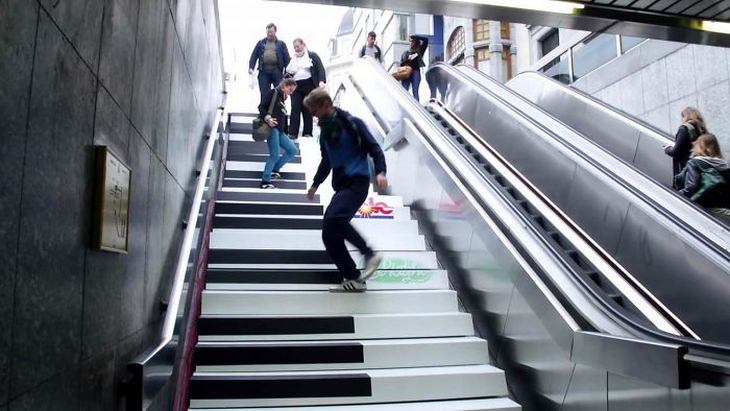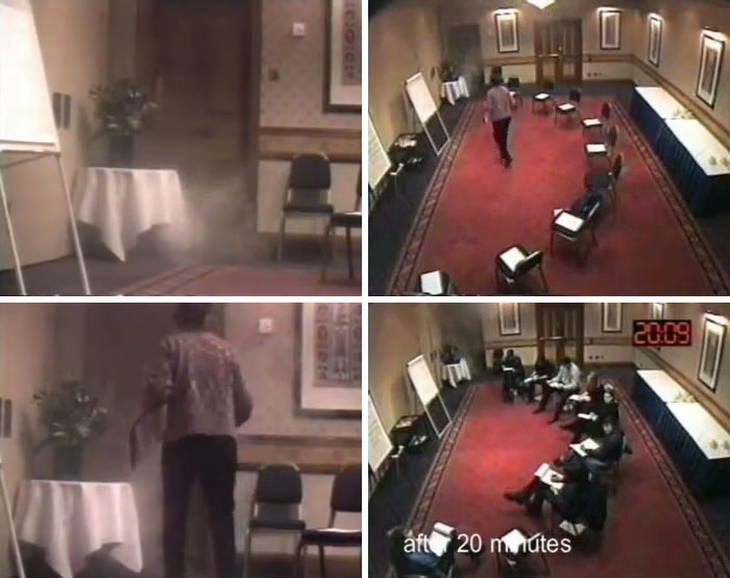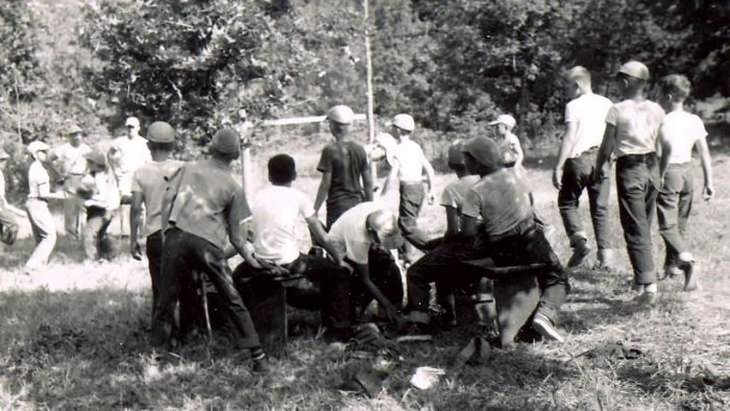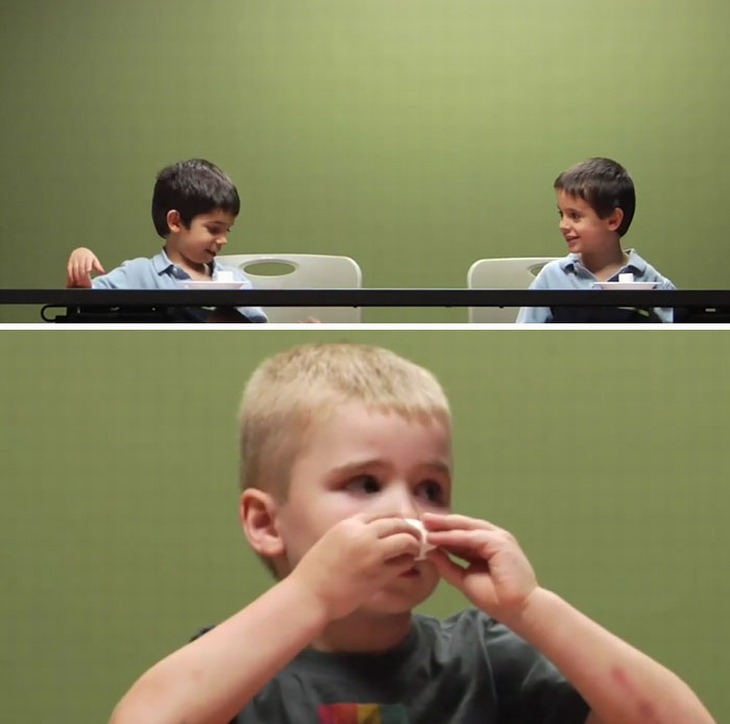1. "Class Divided" Experiment
Following the murder of civil rights leader Martin Luther King in 1998, a third-grade teacher attempted to discuss discrimination issues, racism, and prejudice with her students. She felt that the discussion wasn't getting through to her students, so she decided to try something more practical. Seeing as the students in her class did not normally interact with members of a minority in their town, she devised a two-day "blue eyes/brown eyes" exercise to highlight the unfairness of discrimination and racism.
On the first day, students with blue eyes were given preferential treatment, then on the second, students with brown eyes were given preferential treatment. The teacher found that students in the preferential groups on both days of the experiment performed more enthusiastically and answered questions more quickly when compared to their "discriminated against" classmates.
2. "Piano Stairs" Experiment
German automaker, Volkswagen, set up an initiative entitled "The Fun Theory". It set out to prove that people's behavior could be changed by making menial tasks enjoyable in some way. As part of the initiative, the company installed musical steps on the staircase of a subway station in Stockholm and observed if more people would take the healthier (and more fun) option rather than the escalator.
The study found that 66% more people used the stairs than usual on that day, which is a testament to the playfulness and inner child that's found within all of us. It showed that efforts to make cities more fun can actually make us all happier, fitter and healthier.
3. "Violinist in the Metro" Experiment
Violin virtuoso Joshua Bell is known around the world for his exceptional talent and $3.5 million Stradivarius violin, but Washington subway commuters didn't seem to be phased by his presence. On January 12th, 2007, Bell performed a free mini-concert at a subway station for 45 minutes, performing six classical pieces in all. Just six people stopped to listen to him for a while, with about 20 giving him money while walking on.
He managed to collect $32 in all, and no-one even applauded when he finished playing. People simply appeared to dismiss Bell as another busker, rather than recognize him as one of the best musicians in the world playing one of the most intricate pieces of music ever written. This experiment highlighted how setting and presentation make a huge difference in how we perceive something - Bell played a concert at Boston's Sydney Hall three days earlier, where seats were sold for $100 a pop.
4. "Smoke-Filled Room" Experiment
This experiment involved a group of people left in a room to fill out a questionnaire. Smoke was pumped under the door to mimic the effect of a fire in the next room. Although one would expect the members of the group to get up and leave the room quickly, that didn't actually happen, because their behavior was influenced by two actors who were instructed to behave as if they didn't care about the smoke.
The experiment found that 75% of participants reported the smoke almost immediately when they were alone in the room, however, this figure dropped to 10% when actors were in the room with them. In fact, nine out of ten participants kept on filling in their questionnaires. It is a great example of how the passivity of others can influence our decision-making during an emergency situation.
5. "Robbers' Cave" Experiment
Experimenters took two groups of 11 and 12-year-old boys to what they thought was a summer camp as part of this experiment. The two groups were separated from each other during the first week of the experiment, so they didn't know about each other or interact. This period allowed the boys within each group to bond with one another.
When the first week was up, the two groups were introduced to each other, and signs of hostility were apparent almost immediately. The experimenters inflamed things further by creating competition between the groups. As predicted, they became increasingly hostile and aggressive toward each other as the competition increased.
The third week involved experimenters creating conditions that required both groups to work together to solve a common problem. For instance, the boys in the two groups were given the impression that their drinking water had been cut off by an unknown third party, a problem that required teamwork to be resolved. By the end of the experiment, many inter-group friendships had blossomed, indicating that socialization in this manner is highly effective at reducing prejudice and discrimination.
6. Carlsberg Social Experiment
Danish brewery, Carlsberg, decided to have some fun with a few unsuspecting couples by filling a cinema with tough-looking, tattooed male bikers and leaving just two empty seats. While some of the couples decided to leave immediately, others plucked up the courage to go and sit in the midst of all the scary-looking men. The ones that did pluck up the courage were immediately greeted with cheers from the crowd, as well as a round of free Carlsberg beers. This experiment reminds us that we should never judge a book by its cover!
7. Car Crash Experiment
Back in 1974, two researchers named Loftus and Palmer respectively attempted to prove that the wording of questions had the ability to influence recall in their experiment's participants by twisting their memories of a specific event. Participants were shown slides of two cars getting into an accident and were asked to describe what they were seeing as if they were eyewitnesses at the scene. They were split into two groups, with each group being asked a question about speed using any one of a number of different verbs to describe the impact.
The verb used (either "smashed", "collided", "bumped", "hit" or "contacted") was shown to have an impact on how participants perceived the speed at which the accident happened. In fact, the average speed that was given depending on the verb used in the question was observed to be 40.8 mph for "smashed", 39.3 mph for "collided", 38.1 mph for "bumped", 34 mph for "hit" and 31.8 mph for "contacted". These results showed that eyewitness testimonies that are used as evidence after the commission of a crime can be biased depending on the questions that are asked.
8. Milgram Experiment
In 1961, psychologist Stanley Milgram designed an experiment to show the lengths that people would go to in order to obey an authority figure, even if the acts they were instructed to carry out were clearly going to cause harm to others. Participants were asked to play the role of a teacher and administer electric shocks to a learner (an actor was actually used for this role, and he was out of sight when the experiment was being conducted) every time he answered a question incorrectly.
The learner (or actor) was instructed to answer the questions incorrectly deliberately, and make it sound like he was in a great deal of pain each time a shock was administered. The intensity of pain (or pain faked by the actor) from the shocks being administered was increased with each incorrect answer, but participants continued to administer shocks when they were urged to by the authority figure (the experimenter). By the time the experiment was concluded, some 65% of participants administered what would have been lethal electric shocks.
Whether we like it or not, obedience to authority is ingrained in us all, and this experiment showed that ordinary people are likely to follow orders given out by an authority figure, even if it means killing an innocent human being.
9. "Marshmallow Test" Experiment
Delayed gratification refers to the ability to resist the temptation for an immediate reward in order to receive a greater reward at a later time. During the 1960s and 70s, a psychologist called Walter Mischel devised an experiment involving four to six-year-old children. They were placed in a room with a treat, such as a marshmallow, cookie or pretzel stick, and told that they would get a second treat as well as the first one presented to them as long as they could wait 15 minutes without eating it.
Michel observed the children behaving in a variety of ways, such as covering their eyes with their hands or turning around so that they can't see the treat, or kicking the table. Some of them just ate the treat as soon as the researchers left the room. Over 600 children participated in the experiment, with a minority of them eating the treat immediately, and one-third managing to defer gratification long enough to receive the second treat. Age was a major factor determining deferred gratification.
Follow-up studies conducted on the same participants showed that those who were able to wait longer for the larger reward tended to fare better in life, as was evidenced by their SAT scores, educational achievements, body mass index, and other measures.
10. False Consensus Experiment
The false consensus effect is the psychological notion that people tend to believe that the majority of others agree with their opinions and act in the same way as they do. Researchers asked college students whether they'd be willing to walk around their campus wearing a large sandwich board promoting a restaurant.
The students were then asked to estimate how many students would be willing to wear the board. Those that agreed to carry the sign believed that the majority of others would do the same as them, and those that refused also believed that the majority of others would do the same as them.
In other words, the students were strong in their individual beliefs that others would do the same as them, but the reality is that this is simply not true.










